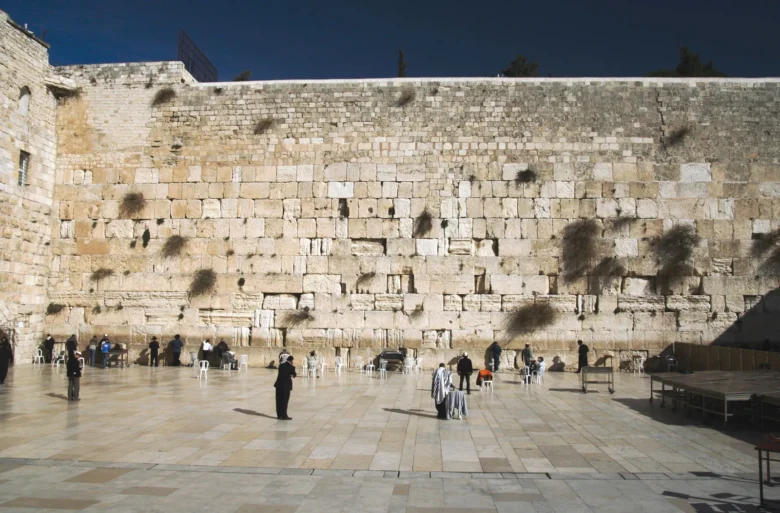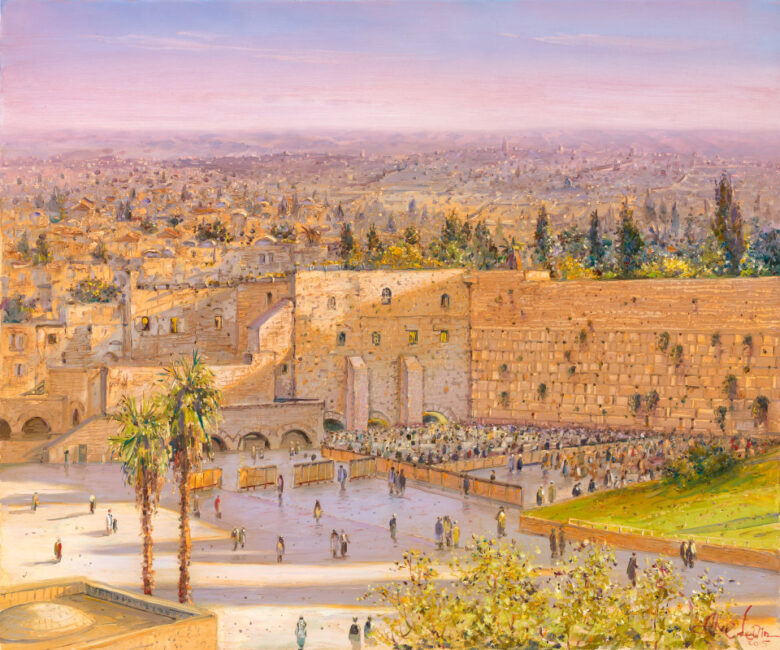There have been a number of famous Jewish artworks over the years. Marc Chagall, David Bomberg and Sonia Delaunay are just a few who have added an exponential amount to the Jewish art scene. Each one shaped their own interpretations of the religion and the societal context surrounding it during their time, leading to gloriously detailed, emotional and meaningful art pieces which will be remembered for hundreds of years.
Although every traditional and modern Jewish artist has a different way of depicting their experiences, there is often a common thread to be found among the catalogue. That is the Kotel, which resides in the capital of Israel, Jerusalem.
For those unaware, the Kotel is an ancient limescale wall which was erected in 19BC. These days, it is a famous, holy symbol for all Jewish people, with many travelling from miles away to recite prayers and even place small parchments of prayers into the gaps between each block.
But why is this wall so important? Why is it a common subject within Jewish art and why do people travel so far to take a glimpse of it? To understand this fully, it is first important to take a look back and discover exactly why the Western Wall was constructed in the first place.
The Origins Of The Kotel

Source: britannica.com
Back when it was constructed, the Kotel was simply a part of a larger architectural framework. It was connected to the site of both the First and Second Temples of Jerusalem, which were deemed to be one of the holiest places in the world by the ancient Jews.
The First Temple, however, was destroyed by Babylonians in 587 BC, and the Second Temple was destroyed by the Romans in 70 CE. By all rights, the Western Wall should have been destroyed too, but throughout this carnage, the Kotel survived, standing strong despite the afflictions which hit both the Jews and the temples when they were under attack.
Its holiness now derives due to its survival of these events, as well as its proximity to where the ancient temples once stood. Today, the Western Wall is linked to both the Al Aqsa Mosque and the Dome of the Rock, which is famous for its iconic golden dome, which can be spotted miles away from the site.
The Western Wall is the closest that Jews can get to the past, and many Jewish people have been heard praying for the temples to be rebuilt and stand tall once again. It stands as a reminder of endurance and holiness among turmoil.
The Meaning Of The Kotel
It is important to take into account the historical context of the Jews when trying to understand the importance that the Kotel has for them. Throughout history, the Jewish people have suffered through many traumatic events, not least the years of slavery that they endured under the hand of the Ancient Egyptians. But just as God led them through the desert to the promised land, it is true that the Jews have always managed to find a way through every movement that has been made against their religion and their liberties.
The communal aspect of the Jewish people remains strong, too. Every year, holidays such as Hanakkah, Rosh Hashanah and Purim are celebrated with friends and family to recognise the sufferings of their ancestors and give thanks for God’s saving grace. In the same way, the Western Wall has become a symbol of both Jewish oppression and their ability to survive throughout it all and remain strong.
Although the ancient temples were destroyed, the Kotel, which is still recognised as the holiest part of Jerusalem today, stood strong through the turmoil and remains standing to this very day. It is a symbol of hope. A recognition that, despite everything that has happened and could still befall them, the Jewish people and their religion will last forever. Some even believe that a third temple will be built when the Messiah returns in the future.
Why Is The Kotel Important For Art?

Source: torahart.com
Once you understand the history of the Kotel and the symbol that it represents, it is easy to realise why it has become such an important feature in Jewish art. For years, Jewish artists have detailed their own lives in the context of the Jewish religion and the oppression that has befallen their people in the past. There is no greater expression of this history than the Western Wall itself.
Although many different artists have their own take on the world they live in, the Kotel always remains exactly the same. It exists as a constant in Jewish lives, meaning its appearance within Jewish art can always be construed as the same message.
That’s not to say it cannot be depicted in different ways, however. Just a quick look on the IsraeliCenterOfJudaica website, for instance, will lead you to a number of Jewish artists who use a variety of painting techniques to depict the wall and its meaning. But whether it is through abstract, surrealist or impressionist art pieces, the Kotel will always portray the same message of holiness, serenity and survival.

Source: artlevin.com
Should You Add The Kotel To Your Art Collection?
If you live in a Jewish home and you have a passion for both traditional and modern Jewish art, then the Kotel should definitely feature in your art collection. As mentioned previously, the Kotel knits a common thread throughout every Jewish life, making it a prominent and important symbol for the Jewish people no matter where they are in the world.
Having it as a centrepiece in your home can allow you to have a constant reminder of Jewish perseverance and hope for the future, which is something that should always be reinstated, especially when times are trying. There are plenty of beautiful and interesting impressions of the Kotel to be found online, so take a look around, pick the one that moves you emotionally, and make sure it’s the next piece of your art collection.

